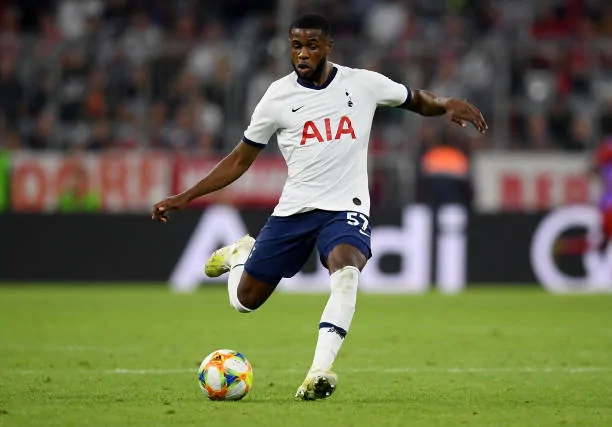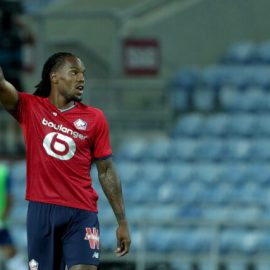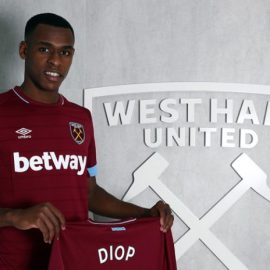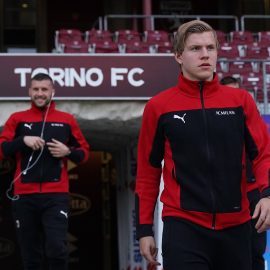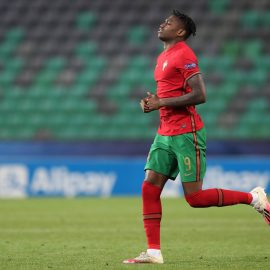While sponsors have long been part of football fashion, it seems that this season, kits have been more inspired and shaped by the advertiser one them than ever before. The Guardian wrote an interesting article about this about two weeks ago, focusing on Premier League Kits. The article begins by saying:
“It’s twelve years now since Douglas Hall was caught by a tabloid sting scoffing at Geordies for paying £50 for replica shirts worth £5. Fans were outraged, and politicians attacked club greed and “exploitation”. Twelve years on, and Newcastle’s new 2010-11 shirt has gone on sale – yours for £50.”
We wrote about fans being outraged not only about the price of a new kit, but also because clubs are releasing too many kits these days. Could it be that we’re paying 50 quid to produce 500 pounds of value for Aon, T-Mobile, Vodafone, Bwin, or other big companies?
The Guardian writes:
“Take Liverpool’s 2010-2011 shirt (£44.99 from Kitbag.com). It’s a classic Adidas design – a modern version of the 1989-90 title-winning top. It feels classy: neat gold piping and quality, breathable fabric. But that’s not what you see first. What you see first is what Standard Chartered Bank paid £80m to make you see first. And it’s not a logo of beauty.”
While I think the logo is a bit more toned down than others, it is very prominent compared to the Carling Logo. The Standard Chartered logo will appear on the first team shirts, advertising boards inside Anfield, at the Melwood training ground and Academy, and across all of the club’s media.
“Likewise Spurs. Replacing the urine stains there’s a retro blue shoulder bar: a good-looking 80s-themed Puma top, spoiled by an ugly “A” motif, promoting a software infrastructure company.”
A fair comment as that was my main problem with the Spurs 10/11 Home shirt this season (pictured below). Before the logo was on, it was one of my favorite kits. Now it looks disgusting on the front, ruining the whole look for a retro shirt that looks fantastic.
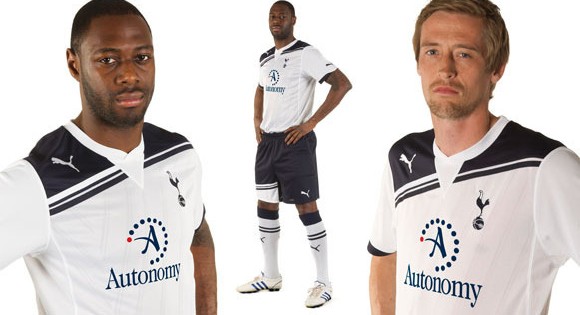
“And Manchester United’s top, billed as a tribute to the 1980-81 side, is actually all about Aon. (Although inside United’s shirt there’s a bonus: a chance to test your gag-reflex by finding the word “Believe” printed on the reverse of the club badge – positioned, says the PR blurb, “right next to your heart”.)”
The whole buzz around the 10/11 Manchester United Home Kit was also just all about Aon. For example, the first official video preview was with Aon, not made by Nike or United:
“Maybe the best new shirt this year, though, is Blackpool’s – a top which proves they’ve already grasped the ethics of Premier League economics. On offer: a chance for fans to spend £40 on a top advertising their new club sponsor Wonga.com. Wonga’s line of business: selling short-term loans at 2689% APR.”
It’s all about Wonga. There should be an ethics review for football shirt ads because there’s a lot of gambling, loaning, and alcohol advertisements. Should be looking forward to the 11/12 Manchester United home kit, sponsored by none other than Marlboro. (hopefully not)
Whether it’s bwin on the Real Madrid 10/11 Kit, fly emirates on the Milan 10/11 Kit, or T-mobile on the Bayern 10/11 Home Kit, it seems that advertisements have become more prominent than ever on football shirts. But when you have to spend 50 mil on a player in time of crisis, maybe it’s understandable why. What do you think?
Also see: Best Football Kits Of All Time. Visit the sportslens.com/Store for all the new football kits, boots and the complete football gear.
Add Sportslens to your Google News Feed!
